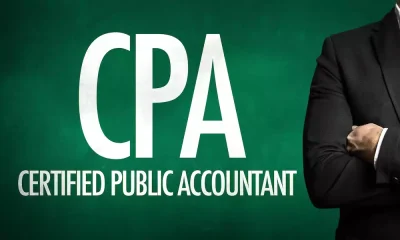Accounting & Finance
A Guide To Optimizing Company Expenses

For businesses looking to improve profitability, optimizing company expenses can be a key strategy.
In fact, overspending with insufficient funds and capital is a leading cause of business failure within the first two years.
By reducing costs and increasing revenue, your company can see significant improvements in profitability.
It is crucial for businesses to implement expense optimization strategies that safeguard their operations and financial stability.
This guide will explore eight practical ways to optimize your company expenses and achieve financial success.
What is Expense Optimization?
When a business reduces or eliminates costs to maximize profitability without compromising on quality, efficiency, or the performance or value of the business, this is known as executing a sustainable expense optimization plan.
With cost reduction, businesses can improve cash flow, increase profitability and reinvest the savings into the business to enhance growth.
What Are Company Expenses?
Company expenses are the costs incurred while running a business. They are generally any cost a business requires to operate effectively and generate revenue. While these expenses will vary, they typically include:
- Salaries
- Equipment
- Supplies and inventory
- Rent and utilities
- Marketing and sales
- Insurance, legal, accounting, taxes
- Other operational costs
Company Expense Categories
Why it’s vital to know the actual expenses, you should also know the three key categories so you can make an informed decision on prioritizing cost reductions.
Operating expenses
Short-term daily expenses include bills, traveling expenses, advertising and marketing costs, insurance, labor, materials, storage, or shipping costs.
Non-operating expenses
While not required for the day-to-day running of the business, the company will incur these occasionally. They can include expenses like legal fees and interest charges.
Capital expenses
Costs associated with starting a new project or acquiring or improving a long-term asset such as equipment, property, or vehicles.
Strategies
1. Review your current expenses
Thoroughly analyze your financial reports to identify all your expenses.
Categorize your expenses into different cost areas such as payroll, utilities, rent, and supplies,
Look at each category closely to identify areas where the company has been overspending and where you can concentrate on reducing costs.
Once you’ve identified the categories, you can reduce and set goals for each category. These goals must be both achievable and measurable and align with the company’s objectives. Use the SMART goals methodology.
2. Use a business credit card
The strategic use of a business credit card can help you optimize company expenses. It’s important to choose a business credit card that offers rewards and benefits that align with your business spending and expense management tools that enable you to track and categorize expenses to identify areas where you may be able to reduce costs.
Damian Brychcy, COO and US MD of Capital on Tap says using a business credit card can be a valuable tool for monitoring your company’s financial performance.
Many credit cards offer features that allow you to easily review your financial statements and track your spending in line with your budget.
Regularly evaluating your expenses can identify areas where costs can be optimized and make adjustments to improve your bottom line. This could mean negotiating better deals with suppliers, cutting back on unnecessary orders, or finding more efficient ways to operate.
Remember, budgeting is an ongoing process, and regularly monitoring and adjusting your strategies is crucial for achieving financial growth and stability.
3. Review vendor contracts
Review all vendor and supplier contracts to identify potential opportunities for cost savings. Check the terms of the contracts, such as discounts, pricing, and renewal dates, before approaching vendors. You can then negotiate improved terms or switch to a different vendor for a better deal.
4. Utilize cost-saving technologies
Technology can help you reduce business costs. For instance, replacing old incandescent light bulbs with LED bulbs can help you save on energy. You can also consider switching to versatile cloud-based software systems to increase flexibility and reduce the need for hardware and maintenance. Investing in energy-efficient equipment can also help your business save on utility costs.
5. Streamline your existing processes
Review your current processes to identify any that are no longer required or inefficient and look for ways to streamline them. Automation can be applied to eliminate many repetitive tasks, helping reduce labor costs. Outsourcing can also help reduce staff workload so they can focus on more profitable business areas.
6. Cut unnecessary expenses
Review all your business’s expenses and eliminate any that are not essential or rarely used, like subscriptions. If you want to keep certain services, consider reducing their frequency. There’s also the option to replace paper-based processes with digital alternatives to save on printing and postage costs.
7. Introduce effective cost-control measures
Establish effective cost-control measures, such as setting a budget for each expense category and monitoring this to ensure compliance. You can also introduce a system to ensure only necessary expenses are approved.
8. Monitor and adjust
You should continuously track your expenses and adjust your cost-reduction strategies as necessary. Also, regularly review your financial reports to track your company’s progress toward its expense reduction goals. Be prepared to adjust your strategies if you don’t see the desired results.
Conclusion
By optimizing your expenses and establishing robust cost-reduction strategies, your company can improve its long-term profitability, cash flow, and financial health. A proactive approach to managing company expenses can help your business position itself for long-term growth and success.









